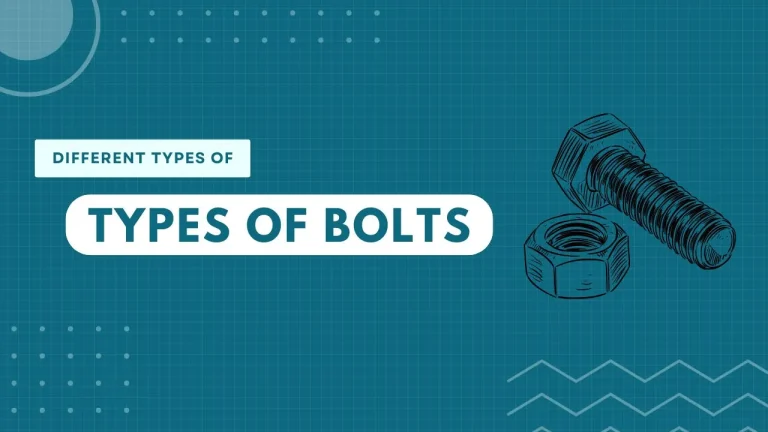8 Car Safety Features That Help Prevent Accidents
Car safety is paramount for every vehicle owner, especially in bustling cities like Charleston. With increasing traffic and the ever-present risk of accidents, knowing the essential car safety features can significantly reduce the likelihood of collisions and ensure the well-being of all road users.

This article will delve into the critical safety features that every car owner should be aware of to enhance their safety on the road. From preventing skids to alerting drivers about potential hazards, these features are designed to protect drivers and passengers alike. Understanding and utilizing these technologies can make a significant difference in ensuring a safer driving experience.
1. Anti-lock Braking System (ABS)
The Anti-lock Braking System, commonly known as ABS, comes in handy during hard braking, which can cause skidding and a loss of steering control. This system rapidly pulses the brakes, allowing the driver to maintain control over the steering while slowing down the vehicle. In emergency situations, ABS can be the difference between a minor scare and a major accident.
By preventing wheel lockup, ABS ensures that the tires maintain traction with the road surface, reducing stopping distances and enhancing vehicle stability. For Charleston drivers, who often navigate through heavy traffic and unpredictable weather conditions, ABS provides an added layer of safety, helping them to stop quickly and maintain control of their vehicles.
2. Speed Limiting Technology
According to the leading highway accident lawyer in Charleston, most highway accidents occur due to over speeding – and this is where car safety features like speed limiters come in.
Speed Limiting Technology is a feature designed to help drivers adhere to speed limits and prevent overspeeding. This system can be set to restrict the maximum speed of the vehicle, ensuring that the driver does not exceed a predetermined limit. In some advanced systems, the technology uses GPS data and road sign recognition to automatically adjust the speed limit based on the current road conditions, reducing any chances of road accidents.
3. Electronic Stability Control (ESC)
Electronic Stability Control (ESC) is another vital feature that enhances vehicle safety, particularly during skids and loss of traction. ESC detects when a vehicle is losing control and automatically applies brakes to individual wheels to help the driver regain control. This feature is especially useful in preventing rollovers and other types of accidents that occur when a vehicle skids or swerves unexpectedly. For instance, if a car begins to oversteer or understeer, ESC intervenes by reducing engine power and applying brakes to specific wheels, helping to steer the vehicle back on its intended path.
People Also Read?
In Charleston, where sudden weather changes can create slippery road conditions, ESC is indispensable in maintaining vehicle stability and preventing accidents.
4. Traction Control System (TCS)
The Traction Control System (TCS) is designed to prevent wheel spin by applying brakes to the spinning wheels. This feature is particularly useful on slippery or uneven surfaces, where maintaining traction can be challenging. TCS ensures that the vehicle remains stable and easy to control, even in adverse conditions.
By preventing wheel spin, TCS helps drivers maintain a steady course, reducing the risk of losing control and veering off the road. In a city like Charleston, where rain and wet roads are common, TCS plays a crucial role in enhancing vehicle stability and safety, making it an essential feature for all drivers.
5. Adaptive Cruise Control (ACC)
Adaptive Cruise Control (ACC) is a smart upgrade to traditional cruise control systems. ACC uses radar and camera sensors to monitor the traffic ahead and adjust the vehicle’s speed accordingly, maintaining a safe following distance from the car in front. This feature is particularly beneficial for reducing driver fatigue on long trips and in heavy traffic.
With ACC, drivers can set their desired speed, and the system will automatically slow down or speed up to keep a safe distance from the vehicle ahead. In Charleston, where traffic congestion can be a daily challenge, ACC helps drivers navigate the roads more comfortably and safely, reducing the stress of constant speed adjustments.
6. Blind Spot Detection (BSD)
Blind Spot Detection (BSD) is a crucial safety feature that addresses one of the most common challenges drivers face: the blind spot. Blind spots are areas around the vehicle that the driver cannot see using their mirrors. BSD uses sensors to monitor these areas and alerts the driver when another vehicle is detected. Typically, the system provides a visual warning on the side mirror or an audible alert when a car is in the blind spot, especially if the driver signals a lane change.
Furthermore, This feature significantly reduces the risk of side collisions by making drivers aware of vehicles they might not otherwise see. For drivers in Charleston, where merging onto busy highways and navigating through congested streets is a daily occurrence, BSD provides an extra layer of awareness, making every trip safer.
People Also Read?
7. Forward Collision Warning (FCW)
Forward Collision Warning (FCW) is designed to prevent front-end collisions by alerting drivers to potential obstacles or vehicles ahead. Using radar and camera sensors, FCW continuously monitors the road and calculates the distance and relative speed of the vehicle in front. If the system detects that a collision is imminent, it issues a visual and/or audible warning to prompt the driver to take corrective action, such as braking or steering.
This feature is especially useful in heavy traffic or on highways, where sudden stops are common. In Charleston, with its mix of urban and suburban roads, FCW helps drivers stay alert and respond quickly to unexpected changes in traffic conditions, reducing the likelihood of rear-end accidents.
8. Automatic Emergency Braking (AEB)
Automatic Emergency Braking (AEB) warns the driver of a potential collision and automatically applies the brakes if the driver fails to respond in time. AEB can significantly reduce the severity of a crash or even prevent it altogether. This feature uses the same sensors as FCW to detect obstacles and vehicles ahead, and if a collision is imminent and the driver does not react, AEB engages the brakes to slow down or stop the vehicle.
This is particularly beneficial in city driving, where traffic is unpredictable, and quick stops are often necessary. For Charleston residents, AEB provides peace of mind, knowing that their car can assist in preventing accidents, even in moments of driver inattention.
People Also Read?
What is a Phishing Simulation & How to Protect Against Attacks
Conclusion
Understanding and utilizing car safety features can make a significant difference in ensuring a safer driving experience. From advanced braking systems like ABS and ESC to driver assistance technologies such as BSD, FCW, AEB, and speed limiting technology, each feature plays a critical role in preventing accidents and protecting occupants.
In Charleston, where traffic conditions can be challenging and unpredictable, these safety features are even more essential. By staying informed about these technologies and incorporating them into their vehicles, drivers can enhance their safety and that of others on the road. Prioritizing these features when purchasing a vehicle can lead to a safer, more confident driving experience, ultimately reducing the risk of accidents and ensuring peace of mind.





